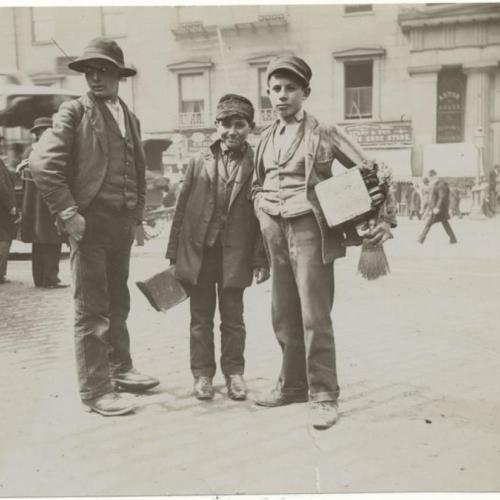6. Alice Austen and Gertrude Tate
Artifact:
Photographs by Alice Austen
Where to find them:
NYC Tenements, photographs printed on the left side of the interpretative label in front of the Lower East Side street scene


Alice Austen (1866–1952) was a prolific photographer, known especially for her documentation of New York’s immigrant communities, the social world of upper- and middle-class women at the turn of the century (including bicycle riding, which Austen advocated for women as an important tool for health and freedom), and her travels.
Austen broke with gender norms as one of the first female photographers to work in the field rather than remaining in the studio. Doing so involved traveling with fifty pounds of equipment, often by bicycle. Austen was a lesbian and spent fifty-six years with Gertrude Tate, thirty of which they lived together in Austen’s home, “Clear Comfort,” which is now the Alice Austen House Museum, a National Historic Landmark on Staten Island, New York. In 1945, when the couple was evicted from their home (Austen having lost her wealth in the 1929 stock market crash), their families rejected their relationship and separated them. When Austen died in 1952, their wishes to be buried together were ignored by the family.
Austen began her work documenting immigrant communities in the 1890s, at the request of Dr. Alvah H. Doty (1854-1934) of the U.S. Health Public Health Service. New York’s Quarantine Station was located just south of Austen’s home on Staten Island, and she photographed there, as well as at the facilities on Hoffman and Swinburne Islands for over a decade. This work was exhibited by Austen at the 1901 Pan-American Exposition in Buffalo.


